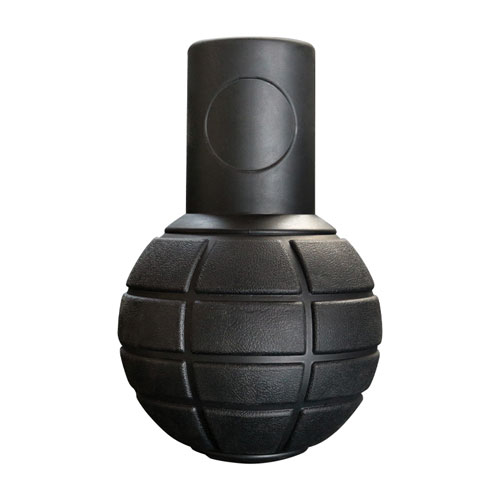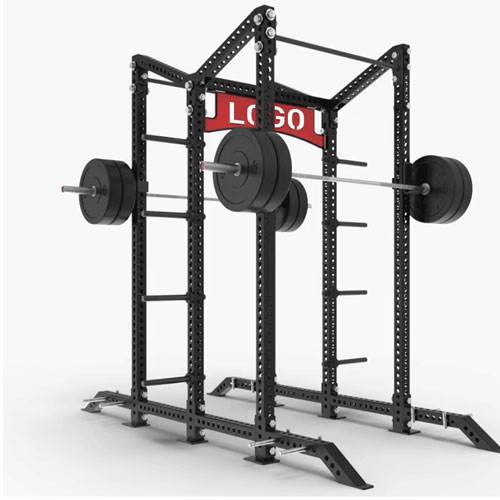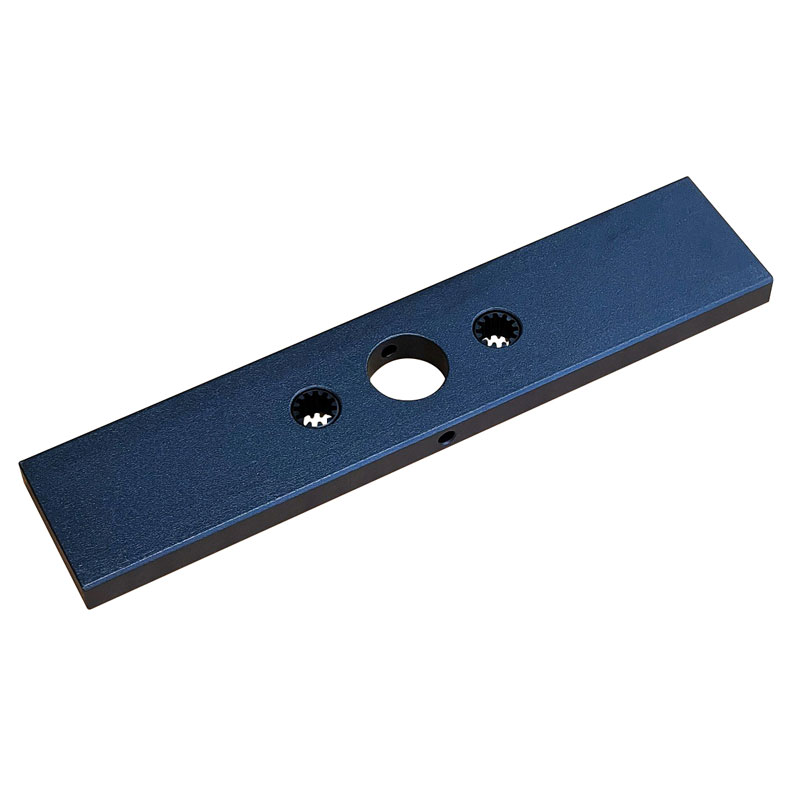Quality Barbell Production

In the world of strength training, the barbell stands as an iconic piece of equipment. From professional athletes to fitness enthusiasts, barbells are essential tools for building strength, increasing muscle mass, and improving overall fitness. However, not all barbells are created equal. The quality of a barbell can significantly impact performance, safety, and longevity. This article delves into the intricacies of quality barbell production, exploring the materials, processes, and standards that define a superior barbell.
Introduction
When it comes to fitness equipment, quality matters. A high-quality barbell is more than just a metal rod with weights; it's a precisely engineered tool designed to withstand intense training sessions while providing optimal performance. Understanding what goes into the production of a quality barbell can help consumers make informed decisions when purchasing this essential fitness equipment. This article will explore the various aspects of barbell production, from material selection to manufacturing processes, and how these factors contribute to the overall quality of the final product.
Materials Matter: The Foundation of Quality Barbells
1. Steel Composition
The primary material used in barbell production is steel, but not all steel is created equal. High-quality barbells are typically made from specific steel alloys that offer the right balance of strength, durability, and flexibility. Common steel alloys used in barbell production include chromium-molybdenum steel (chrome-moly), which provides excellent strength and toughness, and high-carbon steel, known for its durability and ability to handle heavy loads. The precise composition of the steel can significantly impact the barbell's performance characteristics, such as its whip (flex) and torsional stiffness.
2. Sleeve Bearings
The sleeves of a barbell are the rotating parts that hold the weight plates. Quality barbells feature precision bearings that allow for smooth rotation, reducing friction and wear. Common bearing types include bushings, which are less expensive but offer more friction, and needle bearings, which provide smoother rotation but are more costly. The type of bearing used can affect the barbell's performance, especially during dynamic movements like cleans and snatches.
3. Finishing and Coatings
The finishing and coatings applied to a barbell not only enhance its appearance but also protect it from corrosion and wear. Common coatings include zinc plating, which provides basic corrosion protection; chrome plating, which offers a more durable and attractive finish; and nickel plating, known for its hardness and resistance to wear. Some high-end barbells feature specialized coatings like Torx or Hydro, which offer superior durability and grip. The choice of coating can impact the barbell's longevity and performance, especially in harsh training environments.
4. Knurling
Knurling refers to the crosshatch pattern on the barbell's grip area, which helps prevent hands from slipping during lifts. Quality knurling is precise, consistent, and provides the right amount of grip without being too aggressive. Some barbells feature raised dot knurling near the sleeves to help lifters maintain proper grip during exercises like deadlifts. The type and quality of knurling can significantly impact the user's experience, especially during heavy lifts or sweaty workouts.
Manufacturing Processes: Crafting the Perfect Barbell
1. Forging Methods
The method used to shape the barbell's steel significantly impacts its quality and performance. There are two primary forging methods: cold forging and hot forging. Cold forging involves shaping the steel at room temperature using extreme pressure, resulting in a denser, stronger bar with fewer imperfections. Hot forging involves heating the steel to high temperatures and then shaping it, which can create a more flexible bar with a unique whip. Both methods have their advantages, and the choice between them often depends on the intended use of the barbell.
2. Heat Treatment
Heat treatment is a critical process in barbell production that involves heating and cooling the steel to achieve specific mechanical properties. Proper heat treatment can increase the steel's strength, hardness, and durability, making the barbell more resistant to bending and breaking. The exact heat treatment process varies depending on the type of steel and the desired performance characteristics. High-quality barbells undergo precise heat treatment processes to ensure optimal performance and longevity.
3. Precision Machining
Precision machining is essential for ensuring that all components of the barbell fit together correctly and function as intended. This process involves using advanced machinery to achieve tight tolerances, particularly in the sleeves and bearings. High-quality barbells undergo meticulous machining processes to ensure that the sleeves rotate smoothly, the bearings align perfectly, and the overall structure is balanced and symmetrical. These precision processes contribute to the barbell's performance and safety during use.
4. Quality Control and Testing
Quality control is a crucial aspect of barbell production that ensures each barbell meets the manufacturer's standards for performance, durability, and safety. This involves rigorous testing of various components, including weight capacity, torsional stiffness, and sleeve rotation. High-quality manufacturers conduct comprehensive quality control checks at every stage of production, from raw materials to finished products. These rigorous testing procedures help identify and eliminate any defects or inconsistencies, ensuring that each barbell performs as intended.
Standards and Certifications: Ensuring Quality and Safety
1. International Weightlifting Federation (IWF) Standards
The International Weightlifting Federation (IWF) sets strict standards for barbells used in competitive weightlifting. These standards include specifications for weight, dimensions, material composition, and performance characteristics. Barbells that meet IWF standards are certified for use in official competitions, ensuring fairness and safety for all participants. Manufacturers that produce IWF-certified barbells must adhere to these stringent standards throughout the production process.
2. International Powerlifting Federation (IPF) Standards
The International Powerlifting Federation (IPF) also sets specific standards for barbells used in powerlifting competitions. These standards differ from IWF standards in some aspects, reflecting the unique demands of powerlifting exercises like squats, bench presses, and deadlifts. IPF-certified barbells must meet requirements for weight, dimensions, sleeve rotation, and durability. Manufacturers that produce IPF-certified barbells must undergo rigorous testing and certification processes to ensure compliance with these standards.
3. Other Industry Standards
In addition to IWF and IPF standards, there are other industry standards and certifications that manufacturers may pursue. These include standards set by organizations like USA Weightlifting and the CrossFit Games, which have their own specific requirements for barbells used in their competitions. Adhering to these standards ensures that barbells are suitable for various types of training and competition, providing users with confidence in their equipment's quality and safety.
Frequently Asked Questions
FAQ about Barbell Production
What are the different types of barbell production methods?
There are primarily two types of barbell production methods: cold forging and hot forging. Cold forging involves shaping steel at room temperature using extreme pressure, resulting in a denser, stronger bar with fewer imperfections. Hot forging involves heating steel to high temperatures and then shaping it, which can create a more flexible bar with a unique whip. Each method has its advantages, and the choice between them often depends on the intended use of the barbell. Cold-forged barbells are generally more durable and suitable for heavy lifting, while hot-forged barbells offer more whip, making them ideal for dynamic movements like cleans and snatches.
What materials are used in high-quality barbell production?
High-quality barbells are typically made from specific steel alloys that offer the right balance of strength, durability, and flexibility. Common steel alloys used in barbell production include chromium-molybdenum steel (chrome-moly), which provides excellent strength and toughness, and high-carbon steel, known for its durability and ability to handle heavy loads. The sleeves of a barbell are often equipped with precision bearings, such as bushings or needle bearings, to ensure smooth rotation. Additionally, various coatings like zinc, chrome, or specialized finishes are applied to protect the barbell from corrosion and wear, and knurling is added to the grip area to provide a secure hold during lifts.
How can I tell if a barbell is of high quality?
Several factors can help you determine if a barbell is of high quality. Look for barbells made from specific steel alloys like chrome-moly or high-carbon steel, as these materials offer superior strength and durability. Check the type of bearings used in the sleeves—needle bearings provide smoother rotation than bushings. Examine the finishing and coatings for corrosion resistance and durability, and assess the knurling for consistency and appropriate grip. Additionally, high-quality barbells often come with certifications from organizations like the International Weightlifting Federation (IWF) or the International Powerlifting Federation (IPF), indicating that they meet strict standards for performance and safety. Finally, consider the manufacturer's reputation and customer reviews, as these can provide valuable insights into the barbell's overall quality and reliability.
What is the difference between cold-forged and hot-forged barbells?
Cold-forged barbells are shaped at room temperature using extreme pressure, resulting in a denser, stronger bar with fewer imperfections. This method typically produces barbells that are more durable and suitable for heavy lifting, as the steel's molecular structure is compressed, making it less prone to bending or breaking. Hot-forged barbells, on the other hand, are shaped after heating the steel to high temperatures. This process allows for more flexibility and whip in the bar, making it ideal for dynamic movements like cleans and snatches. While both methods have their advantages, cold-forged barbells are generally preferred for powerlifting and heavy strength training, while hot-forged barbells are often favored by weightlifters and CrossFit athletes who value the whip for explosive movements.
How does heat treatment affect barbell quality?
Heat treatment is a critical process in barbell production that involves heating and cooling the steel to achieve specific mechanical properties. Proper heat treatment can increase the steel's strength, hardness, and durability, making the barbell more resistant to bending and breaking. This process helps to remove internal stresses in the steel, which can otherwise lead to premature failure. The exact heat treatment process varies depending on the type of steel and the desired performance characteristics. High-quality manufacturers conduct precise heat treatment processes to ensure optimal performance and longevity of their barbells. Without proper heat treatment, a barbell may not perform as intended, potentially leading to safety issues during use.
Conclusion
Quality barbell production is a complex and meticulous process that involves careful material selection, precise manufacturing techniques, and rigorous quality control. From the type of steel used to the methods of forging and finishing, every aspect of production contributes to the final product's performance, durability, and safety. Understanding these production processes can help consumers make informed decisions when purchasing barbells, ensuring that they invest in equipment that meets their fitness needs and standards.
Whether you're a professional athlete, a competitive weightlifter, or a fitness enthusiast, the quality of your equipment plays a crucial role in your training journey. A high-quality barbell can enhance your performance, reduce the risk of injury, and provide a reliable tool for years of use. By choosing barbells from manufacturers that prioritize quality production processes, you can be confident that you're investing in equipment that will help you achieve your fitness goals safely and effectively.
Ready to Elevate Your Brand with Custom Bumper Plates?
Custom bumper plates can elevate your brand's presence, deepen client loyalty, and drive growth with a standout identity tailored to your vision.
Discover how Leadman Fitness can craft high-quality, custom bumper plates to amplify your brand. Reach out today for a free quote!





